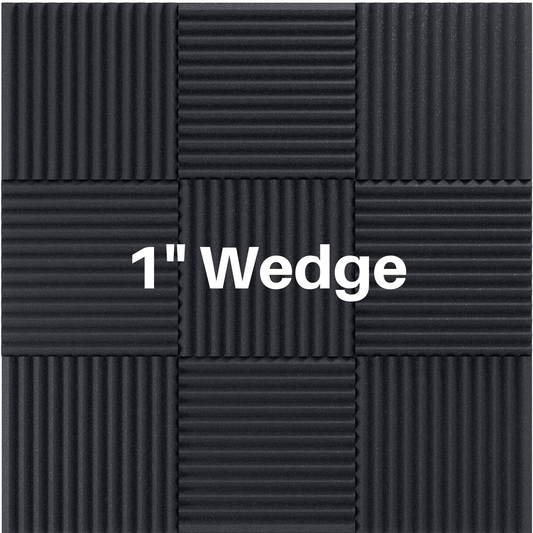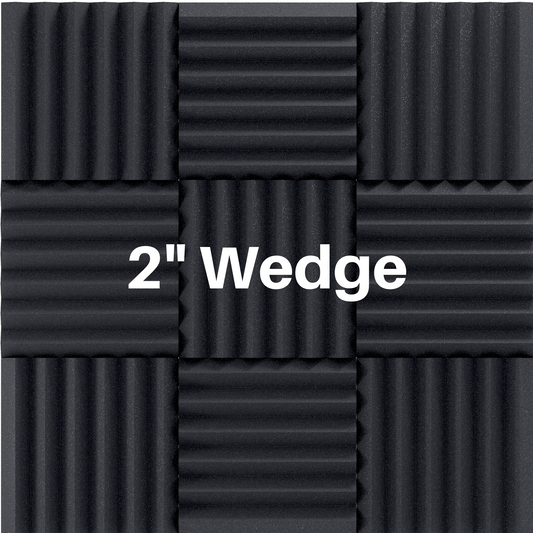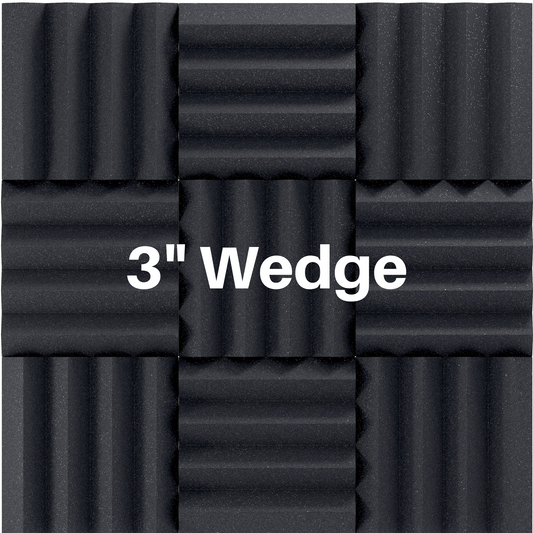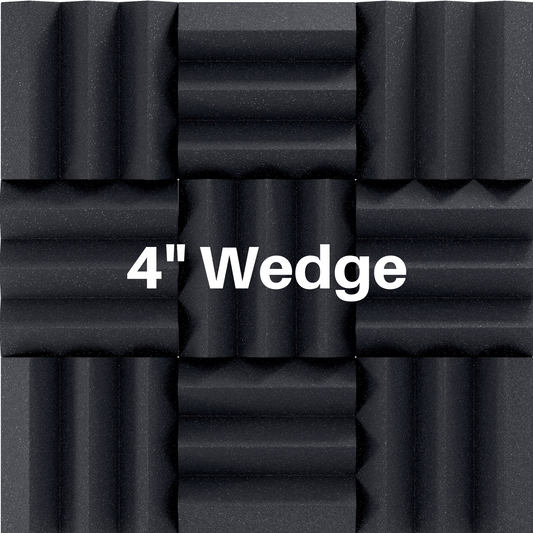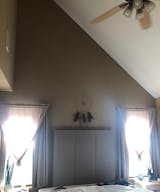Make Acoustic Panels Using 2x4's
Share
Click Here to Get Free Detailed PDF Plans!
You can make one 18.25" x 50" x 3.5" Panel using two 2x4's. We made easy to follow instructions for you.
Plus, the panels are designed to have a 0.75" air gap behind them which increases the sound absorption.
We also added backing lights to the panels. This is an optional step but makes the panels look super cool!
NOTE: We are using pocket holes in this construction method. You can use nails and a hammer to construct the frame instead which is cheaper and easier, just not quite as sturdy.
Materials Needed
For the Panel
- (2) 8-foot 2x4" boards (actual dimensions are 1.5" x 3-1/2" x 8')
- SoundAssured acoustical fabric (pre-cut to 59x36")
- Rockwool Insulation (15.25-in W x 47-in L)
- 2" wood screws
- Staples (for staple gun)
- Backing material (leftover landscape fabric, an old sheet, or acoustical fabric work great)
For Mounting
- Mounting Kit (for wall mounting)
- Eyelets (for ceiling mounting)
- Concrete anchors (if mounting to concrete walls/ceiling)
Tools
- Staple gun
- Drill
- Pocket Hole Jig
- Hand saw or miter saw
- Tape measure
- Pencil
- Speed square (optional, for accurate measurements)
- Safety goggles
- Work gloves
- Respirator mask (for handling insulation)
Step-by-Step Instructions
Measure and Cut the Lumber
- Measure and mark the 2x4 lumber to create the frame.
- Cut four pieces to 18.25 inches each for the short sides.
- Cut two pieces to 47 inches each for the long sides.
Assemble the Frame
-
Lay out two 18.25-inch pieces and the two 47-inch pieces to form a rectangle.
-
Pre-drill holes using pocket hole jig, then use pocket hole screws to attach the pieces together at the corners.
-
Drive two screws at each connection point.
- You will use the remaining two 18.25-inch pieces as backing later.
Add Backing Fabric
- Add the backing fabric and secure using staples. The backing fabric piece will need to be 18.25" x 50.
- Landscape fabric, old sheets, or burlap are good choices. We used leftover landscape fabric in the video because it was sitting in the garage. You can also use acoustical fabric which will help if there is an air gap between the wall and the panel which will add more sound absorption power.
Add Insulation
- Set the insulation directly on top of the backing fabric. It should fit perfectly into the frame as these frames were designed specifically for the 15.25-in W x 47-in L insulation pieces readily available at your local hardware store.
Cover with Acoustical Fabric
- Lay the pre-cut SoundAssured acoustical fabric (59x36") on a flat, clean work surface.
- Flip the stuffed frame over and place the assembled frame on top of the fabric.
- Pull the fabric tightly around the frame, making sure it is smooth and wrinkle-free.
- Use the staple gun to attach the fabric to the back of the frame, securing it every few inches. Start at the center of each side and work outwards to the corners.
- Tuck the fabric at the corners for a clean finish and secure with additional staples. (See video for close up of how to fold corners)
Check out our acoustical fabric colors!
Adding The Back Brackets
- We suggest mounting them 7 inches from each end of the frame. Sit the frame with the front facing down and lay the two 18.25-inch flush against the back of the panels.
- Use a speed square to ensure the backing pieces are square, and the correct length from the top / bottom.
- These pieces will add stability, give anchors for mounting, and create the air gap behind your panel which boosts sound absorption! They will also provide material for us to mount the backing lights (if you want them).
Mounting the Panels
For Wall Mounting
- Attach Mounting Kit to the back of the frame using wood screws.
- Install two screws on your wall to hang the wire from.
- Hang the panel by fitting the wire behind your screw heads.
- NOTE: You can use the D-ring hangers and no wire if you want. You will just have to line up your screws in the wall with the D-rings.
For Ceiling Mounting
- Install eyelets into the backing pieces of the frame.
- Use appropriate anchors or hooks to attach the eyelets to the ceiling.
- Make sure to place the eyelets and hooks in a way that evenly distributes the panel's weight.
Adding LED Backlights To Your Acoustic Panel
- Wrap the LED lights around the 2x4 backing pieces, using the self-adhesive backing to secure them at the start and end.
- In the video we used these LEDs
- Mount the panel using D-rings and a wire.
- NOTE: You can use a saw or a router to notch out the backing 2x4 pieces in order to get a more clean look.
Don't Feel Like Doing All That Work?
If you’d rather skip the DIY route, no worries — we can make custom acoustic panels for you. Check out our pre-made acoustic panels for easy, professional solutions.
Not Sure About How To Treat Your Room?
Building DIY acoustic panels is a fantastic way to improve sound quality, whether you’re setting up a home recording studio or reducing noise in any space. Following the right steps ensures top-notch results. But if you’re not sure how to optimize your room or need personalized guidance, we’re here to help!
Take the next step by scheduling a free phone consultation with our acoustic experts. We’ll guide you through the process, offer tailored recommendations, and help you choose the best materials for your space. Whether you need soundproofing tips or want to know how to build acoustic panels, we’ve got you covered.

